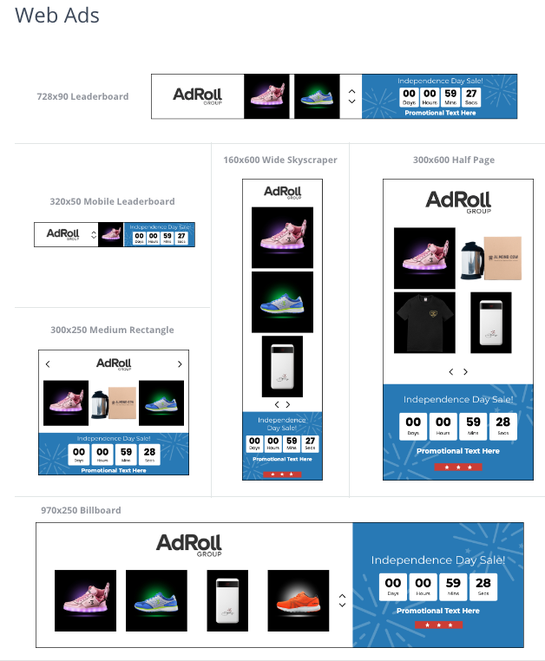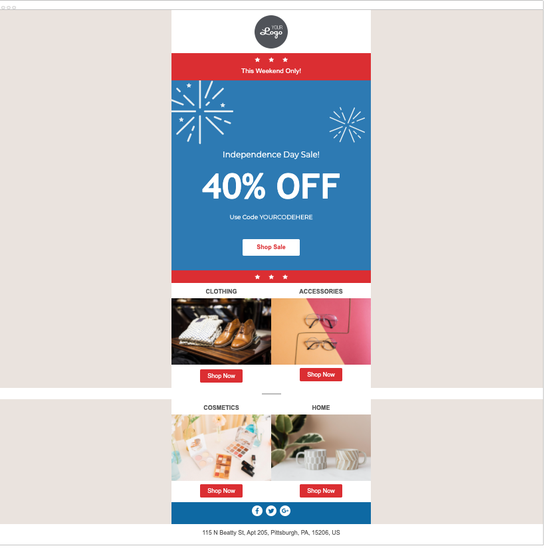For most businesses, the year brings with it ebbs and flows, ups and downs. This fluctuation can often be associated with annual events and the products you are selling. While it can be daunting to stay on top of everything happening around you, establishing a retail moment focused marketing rhythm can address slowness and maximize big holidays. With a little bit of process and a few tools, you can get in front of these opportunities and make the most of it with seasonal marketing.
Setting the Stage
We talk a lot about the importance of personalization. Personalization is this idea of crafting communications around what who your customer is, what they represent, or what they care most about. Along these same lines, seasonal marketing takes inventory of upcoming events to connect your message to specific customer needs, experiences, or celebrations.
The more common seasonal marketing campaigns center around Valentine’s Day, Memorial Day, Back-to-School, and a multitude of year-end holidays. While we recommend that you continue to build campaigns in support of these retail moments, there are hundreds of other events to find opportunities in. Whether you are creating a 4th of July campaign or setting up communications for National Cookie Day, the first step is categorizing these seasonal events so that you can not only prioritize your efforts but also appropriately structure your copy.
For more on seasonal marketing and the holidays that matter:
How Would You Categorize the 4th of July?
The 4th of July is what we would consider an official holiday. However, because the 4th of July in the United States represents so many things to so many people, we like to boil things down to the most common thematic denominators: fireworks, open air, the celebration of summer, and the 3 Fs (food, family, and friends).
What Would You Focus on for Copy and Marketing Materials?
A couple of things that come to mind with the 4th of July are visual identity and value. I would focus on discounting or closing out inventory. The majority of campaigns I see center around coupons or percentage discounts; I am a big fan of bundling — this allows you to discount and deliver the perception of value without losing too much on margin.
For the creative, I would leverage the themes of fireworks and celebration. Complement your brand with the usage of red, white, and blue. You might even try using two of the three colors to subtly connect your campaign to the holiday while avoiding the appearance of a used car lot from the 70s.
This year we actually built 4th of July advertising and email templates. If you need some inspiration or want to shortcut an effective 4th of July strategy, check out the resources below or log into your AdRoll account and start an email or dynamic ad campaign.
![]()
![]()
What Distribution Channels Would You Use?
Email is a no brainer. If you have built up a strong audience, email is a low-cost marketing solution that allows you to generate interest while delivering value.
What else? The most effective digital marketing campaigns are multi-channel, so what else would we recommend? Because the 4th of July is such a social event, I would also leverage, well, social. You might prioritize a photo contest with your Facebook followers. A cleverly written guide to the 4th of July could also go a long way with customers that are looking for a break in the marketing materials they typically encounter this time of year.
Lastly, because the 4th of July is such a visually oriented holiday, I would look at switching up my dynamic ads to emphasize the themes I was working with along with a handful of products that best align with the time of year.
For tips on how to create a robust social media marketing strategy:
How Much Time Would You Spend Preparing for the Holiday?
If you already know that you’re running campaigns for the 4th of July, I would start planning at least 30 days in advance to ensure that your promotions are compelling, that you have enough inventory to support the increased sales volume, and that your pick/pack/ship operations are prepared for a quick turnaround.
If you are unsure about whether or not your products would be of interest to those celebrating the 4th of July, the holiday is easy going enough that offering a limited promotion on a handful of closeout items shouldn’t require too much thought ahead of time. 2-3 days should be sufficient to run some marketing experiments.
How Would You Measure the Success of Your 4th of July Campaign?
This is a tricky one depending on the objectives you set out to execute against. If driving revenue was the priority, there are a number of evaluations you are going to need to make against the opportunity to determine if you realized a return on your efforts. When expanding my seasonal marketing strategies to include a larger number of events, here are a few things I keep top of mind when evaluating performance:
- Is this typically a slower time of year? If yes, did the 4th of July campaign drive increased site traffic, email engagement, or social media activity?
If I can prove that a seasonal marketing campaign positively impacted these metrics, with a little bit of refinement to product mix or what is being discounted, I am sure to convert that traffic into revenue the next go around.
- How much time did you put into the campaign?
If I have put less than a couple of days worth of work into testing a campaign that drives revenue neutral to positive results, I consider the experiment a success. Better understanding your customer’s journey is always a step in the right direction as you are optimizing your marketing efforts.
What Tools Do You Use to Keep Track of Upcoming Retail Moments?
There are a couple of sites that I visit regularly to map seasonal opportunities:
From here, tracking events and or performance using a simple spreadsheet will go a long way to plan for next year.
Last updated on September 20th, 2023.


